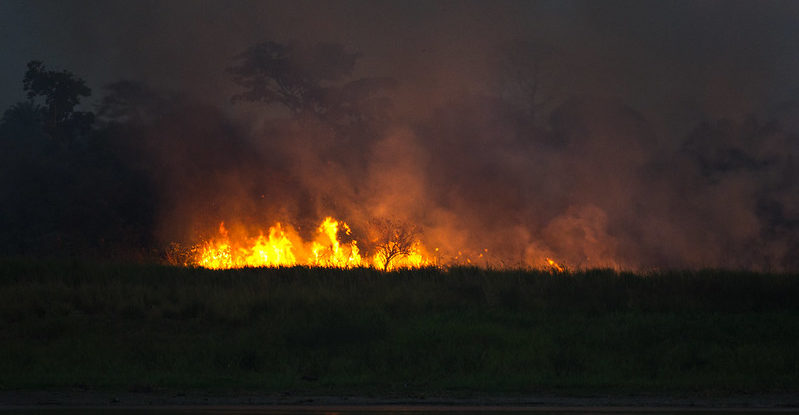
Wildland fires pose a challenge that cannot be solved or tackled completely, says Michael Allen Brady, a principal scientist with the Center for International Forestry Research (CIFOR), who leads the Value Chains, Finance and Investment team.
An expert in forestry research, policy and management, he shared his insights with Forests News on fire behavior and how to combat it.
Q: Last year following human-caused fires in the Amazon, Africa and Southeast Asia, world leaders called for action to protect landscapes from fires. Has anything changed?
A: It is important to recognize that effective wildland fire management programs have taken decades to establish and fund (e.g., Europe, North America, Australia), so support and patience is needed in regions where wildfire is a relatively recent phenomenon. It is also important to recognize that wildfire, particularly in changing landscapes, is not a problem that can be solved or tackled completely (often the assumption in locales new to fire). Rather, it must be managed as an ongoing risk in which it is assumed that wildfires will always occur at different times and locations on the landscape. This requires long-term investment in infrastructure, people and systems. The humid tropics pose a challenge to making these investments as wildfire does not typically occur every year, although this seems to changing in many locations, Indonesia for example.
Q: Is climate change making vegetative fires worse? How?
A: Recent large wildfires have been linked to climate change, particularly in subarctic locations, which are thought to be undergoing the most extreme changes in climate. In the tropics, evidence linking wildfire to climate change remains weak. Other dynamics in the tropics and subtropics are thought to contribute to recent large fires, including changing vegetation and fuel build-up, extreme weather events (El Nino, the Indian Ocean Dipole), expanding populations and urbanization, etc.
Q: Many fires are happening in degraded landscapes, scrubland and areas of secondary vegetative growth. How damaging are these fires?
A: In most areas these types of fires are more common than in standing forests. They pose two concerns. One is that secondary vegetation dries out quickly and is more prone to fire ignition, so more fires. The second is that repeated burning often eliminates seed supplies buried in soil, thus reducing regrowth particularly of native tree species. The result can be a fire-climax ecosystem in which repeated fires arrest plant succession. Grasslands of alang-alang (Imperata cylindica) are an example in Asia and Africa.
Q: What’s the most important action that policymakers and others with responsibility for landscapes around the world should take to manage fires?
A: Key actions are to understand fire behavior across different landscapes – affected by fire weather patterns, types of fuels, topography and the dynamics of ignition risks (mainly human-caused in the tropics) – then use this knowledge to tailor the well-established elements of fire management (planning, preventing and fighting fires) for each landscape. It is important to recognize that landscapes are dynamic (due to fire history, land use, urbanization, climate change, etc.) and fire management programs need to be flexible.
We want you to share Forests News content, which is licensed under Creative Commons Attribution-NonCommercial-ShareAlike 4.0 International (CC BY-NC-SA 4.0). This means you are free to redistribute our material for non-commercial purposes. All we ask is that you give Forests News appropriate credit and link to the original Forests News content, indicate if changes were made, and distribute your contributions under the same Creative Commons license. You must notify Forests News if you repost, reprint or reuse our materials by contacting forestsnews@cifor-icraf.org.